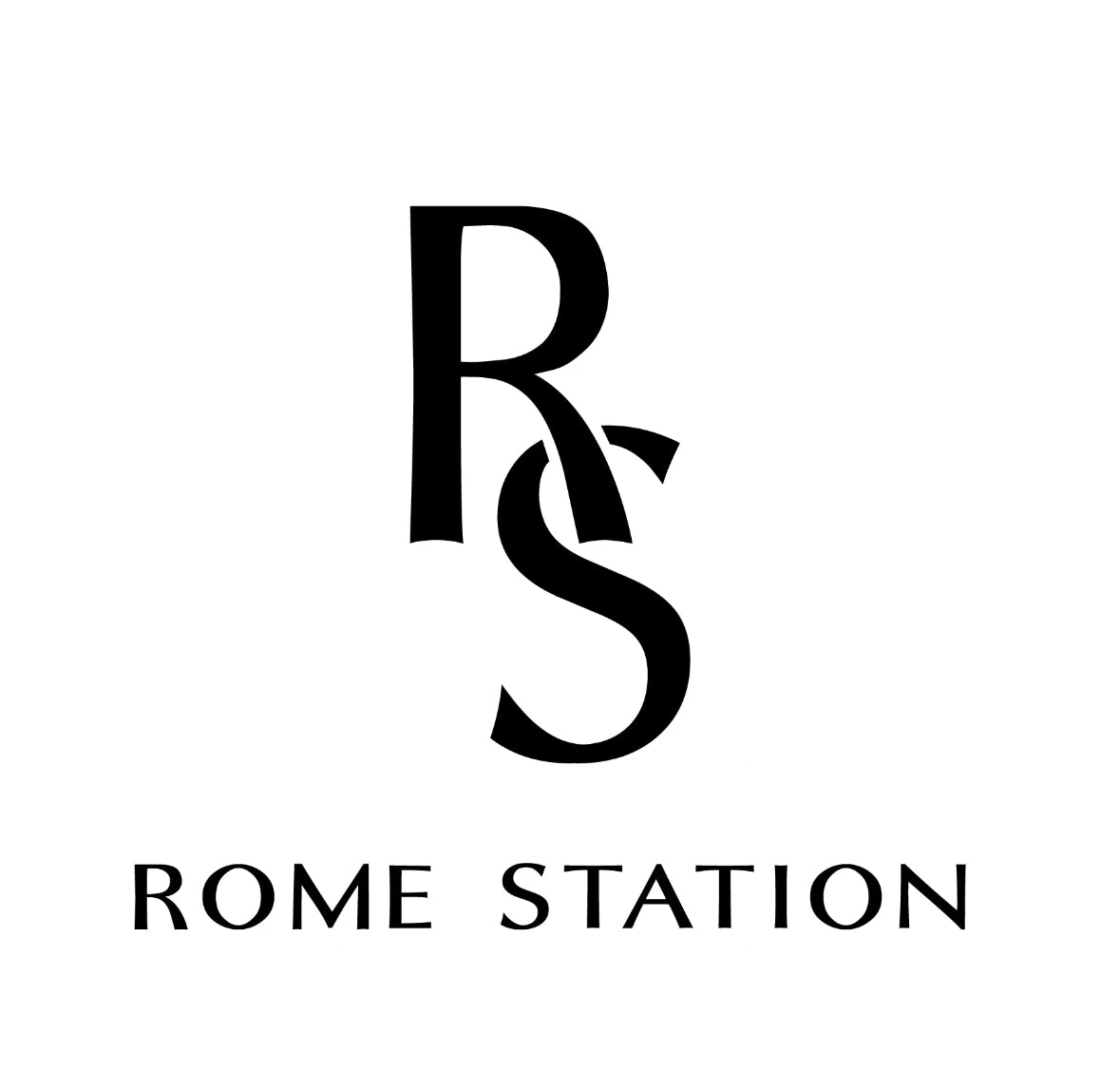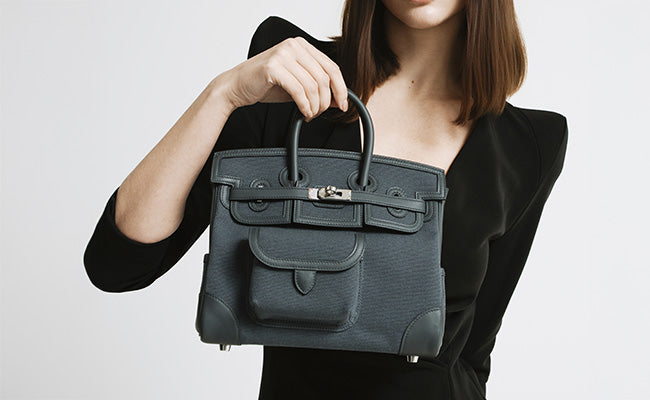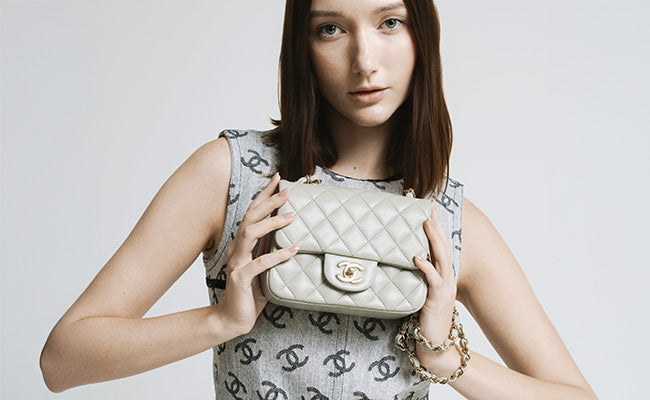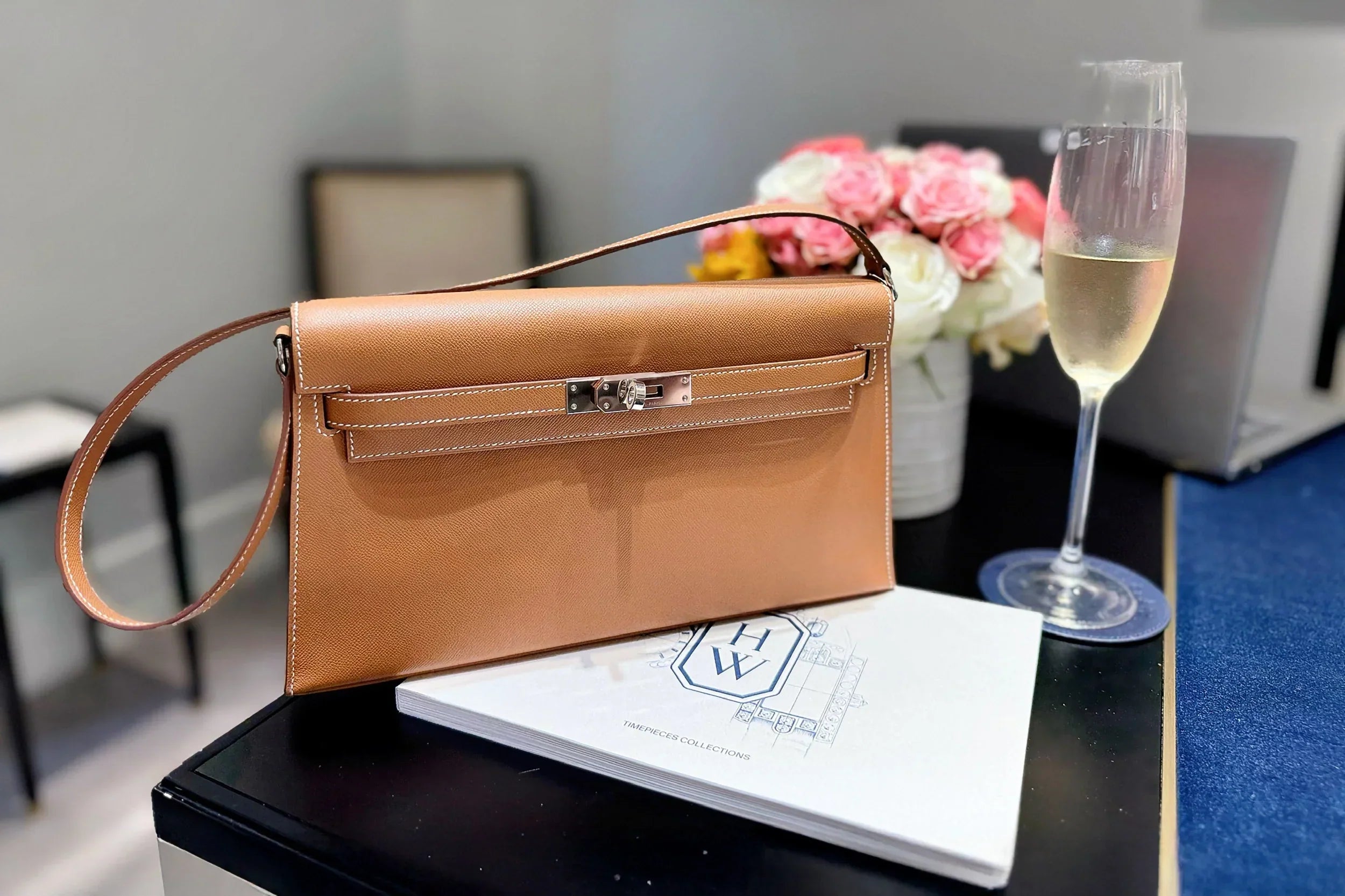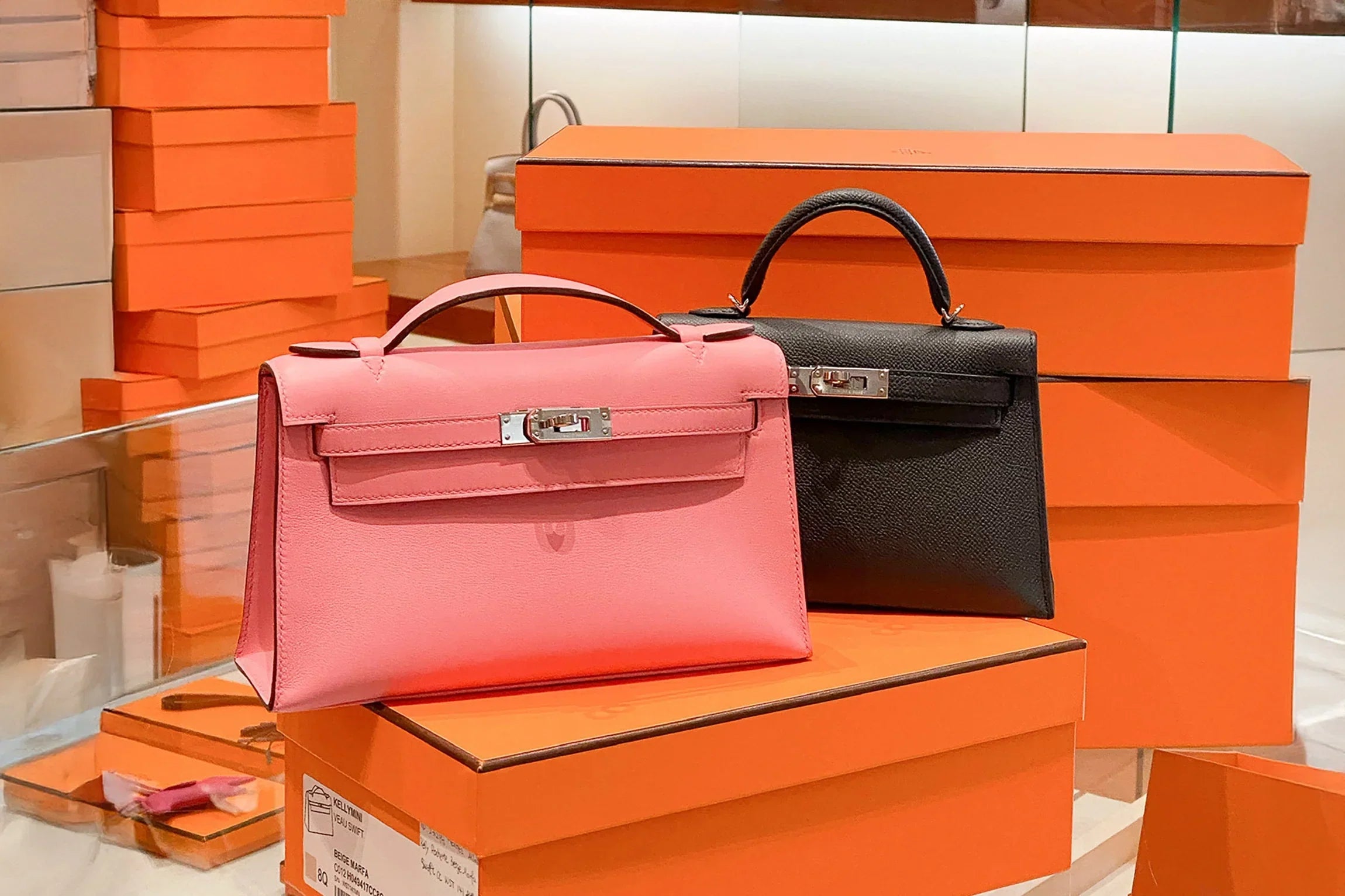
Luxury Handbags vs. Traditional Investments: How They Stack Up
Check out our Hermès collection and Birkin bags!
The world of luxury investing has taken a turn that, frankly, few saw coming; it’s now sitting in closets and on the arms of the fashion-forward everywhere.
Our grandparents played it safe with bonds and blue-chip stocks, but today’s investors? They’re eyeing Hermès Birkins and Chanel classics as genuine ways to build wealth.
Some luxury handbags have outperformed traditional investments like stocks and gold, with certain pieces appreciating significantly over time. The numbers are hard to ignore.
What used to be a fashion statement now doubles as a financial strategy. Designer bags are joining art and wine as alternative investments, offering both personal joy and a shot at real returns.
But before you swap your portfolio for a purse collection, let’s actually dig into how these worlds compare. Do luxury handbags really deserve a place in your investment strategy, or are they just expensive eye candy with a great marketing story?
Key Takeaways
- Only select luxury handbags from top-tier brands like Hermès actually gain value over time, so picking wisely matters
- Designer bags aren’t as liquid as stocks; you need the right buyer and a bit of patience to sell
- Handbag investments blend personal enjoyment with possible financial returns, unlike pure financial assets
Luxury Handbags as Investment Assets
The luxury handbag market has morphed from simple collecting into a pretty sophisticated investment game.
Hermès bags now hold about 103% of their retail value on the resale market, and Chanel’s steady price hikes have made older models more valuable than some new releases.
The Evolution of Handbag Collecting
Collectors have changed their approach to luxury handbags in the last decade. What started as fashion lovers snapping up beautiful pieces has shifted to more strategic, investment-minded behavior.
The Knight Frank Wealth Report 2025 says handbag investments shot up 85.5% over the last ten years, outpacing a lot of other luxury collectibles.
Modern collectors now consider things like:
- Provenance tracking with receipts and documentation
- Authentication through trusted services
- Storage conditions to protect value
- Market timing, buying before price hikes or during brand anniversaries
Gen Z and Millennials are a big part of this, expected to make up 70% of the luxury market by 2025. Their focus on sustainability and quality has made the pre-owned luxury space legit.
People are treating handbag purchases like stock picks, buying ahead of price increases or during moments when collector buzz is high.
Iconic Brands Redefining Value
Hermès leads the pack for investment handbags. The Birkin is basically the gold standard, with rare editions like the Himalaya Birkin pulling in six-figure sums at auction.
Chanel’s Classic Flap is right up there too. The brand’s predictable price jumps have turned older styles into hot commodities.
Louis Vuitton keeps strong resale numbers, especially for limited collaborations and classic monograms. The brand’s reputation and craftsmanship keep collectors coming back.
What sets these brands apart?
- Limited runs create real scarcity
- Long waiting lists drive up demand
- Instantly recognizable designs with pop culture weight
- Next-level craftsmanship means they last
On the resale scene, these bags are everywhere. Walk through any upscale neighborhood, and you’ll spot them in boutique windows.
Handbags as Financial Assets
Unlike stocks or real estate, luxury handbags don’t pay out dividends or rent. Returns come from capital appreciation; if the value goes up, you win.
Things to keep in mind:
- Condition: pristine bags hold value best
- Packaging: original boxes and paperwork matter
- Authentication: essential for resale
- Storage: climate control and insurance add costs
The nice thing? You don’t need millions to get started, unlike classic cars or fine art.
Mid-range brands like Loewe and Bottega Veneta are getting traction as entry-level investments. Auction houses and online platforms add credibility and help with verification.
Liquidity, though, is tricky. Even with all the resale platforms, you can’t always sell a bag overnight.
Comparing Luxury Handbags to Other Collectibles
Designer handbags have some unique perks compared to other collectibles. While art and wine dipped a bit lately, handbags actually went up 2.8% in the past year.
Here’s a quick look:
| Asset Type | Liquidity | Entry Cost | Storage Needs | Emotional Value |
|---|---|---|---|---|
| Handbags | Moderate | $5,000+ | Climate control | High (wearable) |
| Fine Art | Low | $50,000+ | Professional | Moderate |
| Wine | Moderate | $1,000+ | Temperature sensitive | Low |
| Watches | High | $10,000+ | Minimal | High (wearable) |
Handbags are wearable, enjoyable, and can make you money at the same time. That’s a different vibe than just owning a painting or a bottle of Bordeaux.
They’re also a bit easier to get into; brand recognition and basic condition checks are more straightforward than, say, appraising a vintage wine.
Scarcity is the big driver here, just like with art. Limited runs and unique pieces make these bags as desirable as rare paintings or gold.
Performance: Handbags vs. Traditional Investments
Looking at luxury handbags as investments, they make a surprisingly strong case when compared to things like stocks and bonds. The numbers? They might just make you rethink what “smart investing” means.
Annual Returns and Historical Growth
Luxury handbags have posted solid annual returns, sometimes beating out traditional assets. Hermès Birkin bags, for example, have averaged around 14.2% compound annual growth over the last decade. That’s better than the S&P 500’s 10-12% average.
Chanel’s Classic Flap has shot up about 200% in retail price since 2010, roughly 11% per year, and that’s before you factor in resale premiums.
Bonds lately are yielding around 3-5%. Gold? About 7% per year. So handbags are catching eyes for a reason.
Some rare Hermès Kelly bags have gone for over $300,000 at auction, returns that most stock portfolios can only dream about.
Even during rough economic patches, the top-tier handbag market stayed pretty stable while stocks bounced all over the place.
Volatility and Market Fluctuations
Handbags don’t swing in value daily like stocks do, which makes them feel more stable, but that can be misleading.
Stock market ups and downs do affect handbag demand, especially when luxury spending drops in tough times. Still, handbags aren’t tied directly to the markets. Your Chanel isn’t going to lose half its value overnight just because the S&P tanks.
But there’s a catch: trends, celebrity endorsements, or sudden brand changes can send certain models soaring, or sinking, out of nowhere.
And let’s be honest, a damaged clasp or a questionable backstory can tank a bag’s value faster than you might expect.
Liquidity and Exit Strategies
Turning handbags back into cash isn’t as easy as selling stocks. You can’t just click “sell” and watch the money drop into your account.
You need to find the right buyer, often through consignment shops, auctions, or private sales. This can take weeks, sometimes longer.
Fees are steep. Auction houses might take 15-25%, while consignment shops can grab 20-40%. That’s way more than what you’d pay to sell a stock.
Authentication is non-negotiable and can cost hundreds. Buyers want proof, and rightfully so.
Location matters too. The best prices usually come from big cities, so you might need to ship or even travel to get top dollar.
Diversification and Portfolio Role
In a diversified investment portfolio, handbags are an alternative asset with low correlation to traditional markets. They don’t move in sync with stocks, bonds, or even gold.
That helps with diversification. When markets struggle, the value of luxury bags might hold steady or even rise, since wealthy buyers often keep spending.
Still, most experts say you should keep alternative assets like handbags to just 5-10% of your portfolio. They’re a nice complement, but not a replacement for core investments.
Handbag values react differently to economic shifts. Wealthy buyers often keep collecting even when average investors are pulling out of stocks.
There’s also a currency angle, since luxury brands price globally, handbags can act as a kind of hedge for international investors.
What Drives Handbag Value?
The luxury handbag market plays by its own rules, rarity, craftsmanship, and brand legacy all matter more than the usual financial metrics. If you want to understand why certain bags pull in such high prices, you need to look at what really drives their value.
Scarcity and Exclusivity
Limited runs are the backbone of handbag value. Hermès set the bar here; getting a Birkin or Kelly isn’t just about money; it’s about relationships and patience.
Chanel’s doing something similar, raising prices and cutting production on their hottest styles. This creates artificial scarcity and waitlists that can last years.
Limited editions; think artist collaborations or anniversary pieces, which often see the fastest appreciation on the resale market.
Some brands take exclusivity even further, only offering certain bags to top clients. That fuels desire and keeps prices high in the secondary market.
Brand Reputation and Provenance
Heritage brands like Hermès, Chanel, and Louis Vuitton command the highest resale values, decades of quality and desirability count for a lot.
A bag’s backstory matters. If a celebrity owned it or it played a role in fashion history, collectors will pay a premium. The Chanel Classic Flap, nicknamed "Chanel Diana" after Princess Diana, is a great example; cultural cachet turns into market value.
Newer brands like Telfar are making waves too, with resale values sometimes hitting 195% of retail. Momentum can matter as much as tradition.
Craftsmanship and Authenticity
Top-notch construction is what separates investment-grade bags from the rest. Hand-stitching, carefully chosen leathers, and solid hardware justify the price tags and help bags hold their value.
Authentication is a big deal in the resale world; counterfeits are everywhere, and buyers want assurance. Serial numbers, detailed checks, and third-party services are all part of the process.
Materials drive value, too. Exotic leathers like crocodile or ostrich usually appreciate faster than standard options.
Hardware matters, gold-plated fixtures that stay shiny over time help a bag keep its investment appeal.
Condition, Packaging, and Wear
Original packaging can bump up a bag’s resale price by 15-25%. Dust bags, authenticity cards, receipts, and boxes all count.
Condition is everything. Scuffs, scratches, and stains can take a big bite out of value.
Some high-value bags can be restored professionally, but honestly, keeping them in great shape from the start is usually the better play.
Storage is underrated. Humidity control, dust covers, and proper support help bags keep their shape and finish, serious collectors notice these details.
Secondary and Resale Markets
The luxury resale world is booming, now worth over $100 billion globally. Auction houses and online platforms, including Rome Station, have made it more accessible than ever, but authentication is more important than ever as the market matures.
Leading Resale Platforms and Auction Houses
There’s a wide range of resale platforms out there. Leading platforms offer authenticated consignment, while others focus on handbags with creative trade-in programs.
| Platform Type | Specialty |
|---|---|
| Consignment | Authentication guarantee |
| Peer-to-peer | Global marketplace |
| Handbag-focused | Instant quotes, trade-ins |
| Auction houses | Rare, high-value pieces |
Resale Value of Iconic Pieces
Hermès Birkin bags have a reputation for holding their value, sometimes even going for 80-120% of their original price. The rare ones? They can sell for several times retail.
Chanel Classic Flap bags usually keep about 70-90% of their value. Louis Vuitton’s mainstays, like the Neverfull, tend to hover around 60-75% of retail.
Discontinued colors and limited editions? Those can fetch serious premiums. Someone just paid over $200,000 for a pink crocodile Birkin at auction. Wild.
Resale value hangs on a few things:
- Condition and age
- Rarity and overall desirability
- What it cost new
- Timing in the market
Authentication and Trust Issues
Authentication is honestly the biggest headache in the luxury resale market. Counterfeiters are getting so good, even seasoned buyers get tripped up.
Selling platforms are pouring money into authentication tech. Leading platforms, for example, have whole teams and fancy gadgets for this.
Machine learning and AI now help spot fakes. Some sites even offer guarantees behind their authentication process.
Still, peer-to-peer sales? Risky. If you’re buying, stick to platforms with real authentication policies and return guarantees. It’s just less stress.
Risks, Rewards, and Realities
Luxury handbags are a unique investment class, but let’s be honest, they come with their own set of quirks. Fashion cycles, storage headaches, and the simple fact that your “asset” can get scuffed up all make this a different ballgame than stocks or bonds.
Market Trends and Fashion Cycles
Fashion trends can turn a handbag investment from hot to not in no time. Even the Birkin isn’t totally immune, hard as that might be to believe.
Remember all the logo-heavy bags that ruled the 2000s? They tanked when minimalism became the thing. A Louis Vuitton Multicolour bag that once cost a fortune in 2003 might struggle to get half that now.
Current vulnerabilities:
- Younger buyers want sustainable fashion
- Newer brands are chipping away at old luxury houses
- Economic downturns make people rethink splurges
The pandemic in 2020 was a real curveball. Handbag auction prices dropped 15% at first, then bounced back 25% when collectors jumped back in.
Price growth? It’s not a straight line. Chanel’s regular price hikes (5-8% a year) help prop up resale values, but if buyers get fed up, demand could take a hit.
Fashion trends usually run in 7-10 year cycles. Right now, Y2K vibes are back, so vintage Dior Saddle bags have shot up 40% since 2022.
Liquidity, Storage, and Insurance
Selling stocks is a click away. Handbags? Not so much. Turning a bag into cash can take weeks or even months, depending on where you sell.
Selling options and trade-offs:
| Platform | Timeline | Commission | Effort Required |
|---|---|---|---|
| Consignment | 2-6 months | 20-40% | Low |
| Online marketplaces | 1-4 weeks | 5-15% | High |
| Auction houses | 3-6 months | 25-35% | Medium |
Storage isn’t cheap. You need humidity control, dust bags, maybe even a climate-controlled closet. Some collectors drop $200-500 a year just on storage.
Insurance is another reality check. Specialized policies cost about 1-3% of the item’s value per year. So if you’re sitting on a $50,000 Hermès stash, that’s $500-1,500 a year, gone.
Authentication services are now a must, thanks to superfakes. Expect to pay $50-300 per bag for pro verification. It adds up, and honestly, it’s a hassle.
Wear, Usage, and Depreciation
Here’s the kicker: if you actually use your bags, they lose value. Every scratch, stain, or color transfer can knock hundreds, sometimes thousands, off the resale price.
A pristine Birkin can fetch 80-120% of retail. Moderate wear? That drops to 60-70%. If it’s seen a lot of life, you might get half or less. Makes you think twice about taking it out in the rain.
How condition affects value:
- Pristine: 100-120% of current retail
- Excellent: 85-95%
- Good: 70-80%
- Fair: 50-65%
Some materials are more forgiving. Canvas survives better than delicate lambskin. Crocodile looks stunning, but one scuff and, ouch, there goes the premium.
So, do you use your investment or just admire it in the closet? Unlike a rental property that pays you to exist, a handbag only “pays” you when you use it, and that use chips away at its value.
Professional restoration can fix some issues, but it’s pricey, think $300-2,000. And even then, you’ll rarely get it back to “like new.” Prevention is just easier.
Handbag Investing: Pro Tips and Notable Examples
If you want to invest in handbags, you need to know which brands hold up, what styles are truly timeless, and how to build a collection that balances risk and reward.
Choosing Investment-Worthy Bags
Start with legacy brands, the ones with decades of craftsmanship and a cult following. Hermès is the gold standard. A Birkin or Kelly isn’t just a bag; it’s basically a membership card for an elite club.
Chanel is right behind. The Chanel Classic Flap has been iconic since the ‘50s. That quilted look and chain strap? Instantly recognizable.
Louis Vuitton makes it easier to get started. The Neverfull won’t make you Birkin-level returns, but it holds value better than most fashion buys.
Keep an eye on rising stars too. Dior’s comeback under Maria Grazia Chiuri has made their bags more investable. Balenciaga appeals to younger collectors, though they’re a bit more unpredictable.
What makes a good investment bag:
- Limited runs
- Scarcity or waitlists
- Celebrity buzz
- Timeless design
- Decades of brand heritage
Classic Styles and Top Performers
The Hermès Birkin is at the top for a reason. Some have returned 14.2% per year over 35 years, beating the S&P 500. Rare colors and exotics get the highest prices.
Hermès Kelly bags do almost as well. Their shape and the Grace Kelly connection keep them hot at auction. The 25cm and 28cm sizes are the sweet spot.
Chanel’s quilted bags are steady performers. The medium Classic Flap in black caviar leather is basically the benchmark. Chanel’s price hikes also help older bags keep their value.
A few examples:
- 2019 Hermès Birkin 30cm in Togo leather: bought for $12,000, now sells for $18,000+
- 2015 Chanel Medium Classic Flap: retail $4,900, now $7,500+
- Vintage Hermès Constance: up 200-300% over 20 years
Limited editions can spike fast, but timing your sale is everything.
Building a Balanced Collection
Treat handbags like any investment, diversify. Start with a couple of proven winners before branching out.
A starter collection might look like:
- One Hermès (Birkin or Kelly)
- One Chanel Classic Flap
- One seasonal or limited edition “wildcard”
Budget $15,000-50,000 if you want a collection with real investment chops. Smaller budgets? Watches or jewelry might be an easier entry.
As you collect, authentication is non-negotiable. Use services like Entrupy or trusted consignment shops. One fake can tank your whole portfolio.
Storage matters, too. Keep every box, dust bag, and card. Leather hates heat and humidity, so climate control is your friend. Some collectors rotate bags to keep them in top shape.
Don’t let bags take over your portfolio, 5-10% of your investments is plenty. It’s easy to get swept up by the passion, but stay grounded.
Frequently Asked Questions
Here are the questions that come up over and over from collectors and people just dipping their toes into the world of luxury handbag investing. Let’s get into the real numbers, quirks, and surprises of this market.
What's the deal with Birkin bags holding their value better than my stock portfolio?
Birkin bags have averaged a 14.2% annual return from 1980 to 2015, outpacing the S&P 500’s 11.7%. Their secret? Scarcity and those infamous waitlists keep demand sky-high.
Even now, Birkins deliver. A Birkin 30 bought for $10,000 in 2010 might sell for $25,000 or more today.
That’s around 9.6% annualized. Plus, you get to actually use it, not just watch numbers on a screen. Unlike stocks that can bounce around, Birkins tend to rise more steadily over time.
Are those fancy handbags really giving gold and real estate a run for their money?
Surprisingly, yes. Gold only managed a 1.9% annual return from 1980 to 2015, while luxury handbags look like superstars next to that.
Real estate’s done about 4.85% annually long-term. Sure, your $100,000 house from 2010 might be worth $210,000 now, but you can’t wear it to dinner.
Chanel Classic Flaps have posted 8-10% annual returns lately. With retail prices up 60% in the last decade, well-kept bags often sell for more than their original price.
But let’s be real: handbags aren’t as liquid as stocks. Selling a Hermès Kelly can take weeks or months, while you can offload stocks in seconds.
Honestly though, how does the resale market for luxury handbags compare to traditional investments?
The luxury resale market is booming, projected to hit $50 billion by 2026. Various resale sites make selling bags almost as easy as trading stocks.
But there are catches. Platform fees can eat up 20% or more of your sale, and authentication can drag things out.
Stocks win on speed and lower fees. You can sell shares at 3 AM if you want. With bags, patience is required.
The upside? Bags don’t move with the stock market. When portfolios tanked in 2020, luxury bags actually bounced back stronger in 2021.
I've heard owning a Chanel is like having a blue-chip investment. Is there truth to that or just a ritzy myth?
There’s real truth here. Chanel’s steady price increases (5-8% a year) mean your bag appreciates just by existing, kind of like a blue-chip stock.
A Classic Flap that was $5,500 in 2015 goes for $8,800 new now. Vintage ones from that era can fetch $12,000+.
Chanel’s limited supply and constant demand give it that blue-chip feel. They don’t lose value overnight like some trendy brands.
But remember, Chanel bags don’t pay dividends. The “return” is in appreciation, and, let’s face it, in the joy of carrying something iconic.
Can someone explain why my significant other's designer bag collection might actually be a savvy investment?
That collection gathering dust could be worth more now than when it was bought. Many luxury bags appreciate while just sitting there, unlike cars, which lose value the second you drive them off the lot.
Limited editions and discontinued styles often see the biggest jumps. A rare Hermès color or sold-out Louis Vuitton collab can fetch a premium years later.
Bags also diversify your investments; they don’t follow stocks, bonds, or real estate. Instead, they’re tied to fashion cycles and collector demand.
Condition is everything, though. The bag needs to be stored right, barely used, and have all its original packaging to really shine as an investment.
How do luxury handbags fare during economic downturns compared to my ever-so-volatile shares?
Luxury handbags showed surprising resilience during the 2020 pandemic. Stock markets crashed hard at first, but auction prices for bags only dipped around 15%, then bounced back by 25% the next year.
Wealthy collectors, let's be honest, the folks still buying Birkins while the rest of us panic, tend to have diversified portfolios that can handle rough patches better than most investors. They're not exactly sweating the small stuff.
But let's not pretend luxury spending is bulletproof. In the 2008 financial crisis, even top-tier bags lost 20-30% at auction, and it took a few years to recover.
